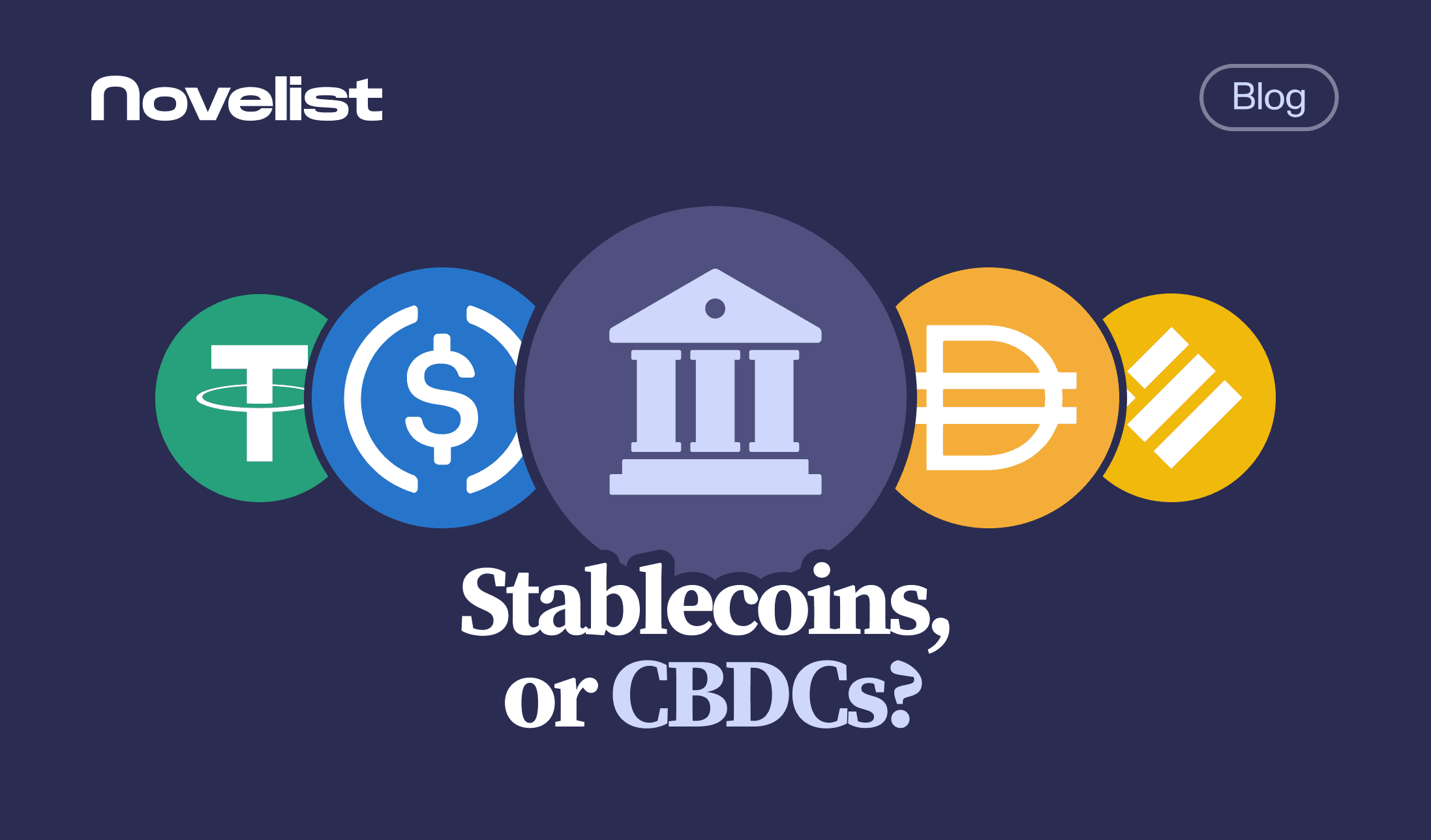Updated on August 11, 2025
Stablecoins, or CBDCs?

What is a CBDC?
A Central Bank Digital Currency (CBDC) is a digital form of money issued directly by a central bank. It may look similar to the digital balance you see in your bank account today, but there is one key difference: that balance is technically a claim on a commercial bank, not on the central bank. Your money exists as a liability of the bank, which in turn holds reserves at the central bank.
With a CBDC, there is no intermediary. It is a direct claim on the central bank itself, just like banknotes, but in fully digital form. This makes a CBDC fundamentally different from a stablecoin. While stablecoins are often pegged to traditional currencies such as the dollar or euro, they are issued by private companies. Their value is backed by reserves, whereas a CBDC is always guaranteed by the central bank. The difference lies in the issuer, the legal status, and the level of certainty the money provides.
Why central banks are considering a CBDC
Central banks have several reasons to explore CBDCs. Payments are becoming increasingly digital, often running through commercial banks and private payment providers. A CBDC can ensure that everyone has access to digital money that is directly guaranteed by the central bank. It can also promote financial inclusion, for example by giving people without a bank account access to a safe digital payment option.
There are also strategic considerations. With their own digital currency, central banks can maintain more control over payment systems, reduce reliance on foreign networks, and foster innovation in the financial sector.
Different approaches around the world
There is no single global approach. Some countries are far ahead, while others are still taking a wait-and-see stance. The map at cbdctracker.org shows the current status of CBDC projects worldwide. Some countries have already launched a CBDC, others are in pilot phases, and many are still in research.

China in the lead
China is the undisputed frontrunner. The country has been experimenting with the e-CNY for years, a digital yuan now used in dozens of cities. The total cumulative transaction volume reached around 7 trillion dollars in June 2025, making it a significant part of overall payment flows. China views the e-CNY not only as a domestic innovation, but also as a tool to strengthen the yuan’s role in global trade.
Europe: gradual progress
Europe is moving more cautiously. The European Central Bank has been working on the digital euro since 2021, which is now in the preparatory phase. Tests are underway on the technical infrastructure, offline functionality, privacy features, and limits on the maximum amount an individual can hold. A final decision on launching the currency is expected by the end of 2025, depending on legislation and stakeholder support.
United States: betting on stablecoins
The United States has taken the opposite approach. The recently passed “Anti-CBDC Surveillance State Act” prohibits the Federal Reserve from issuing a CBDC. The main reason is concern over privacy. Critics fear that a government-issued digital currency would give the state too much insight into personal transactions, potentially leading to widespread surveillance and reduced financial freedom. Instead, the US is embracing stablecoins issued by private companies. Policymakers see them as a more efficient and less intrusive alternative, and the regulatory climate offers ample room for growth.
What this means for now
For the moment, stablecoins are clearly gaining the most traction. With US backing and Circle’s stock market debut, their position is becoming even stronger. CBDCs, on the other hand, remain in experimental stages in most countries. Their ultimate role in the global financial system is still uncertain.